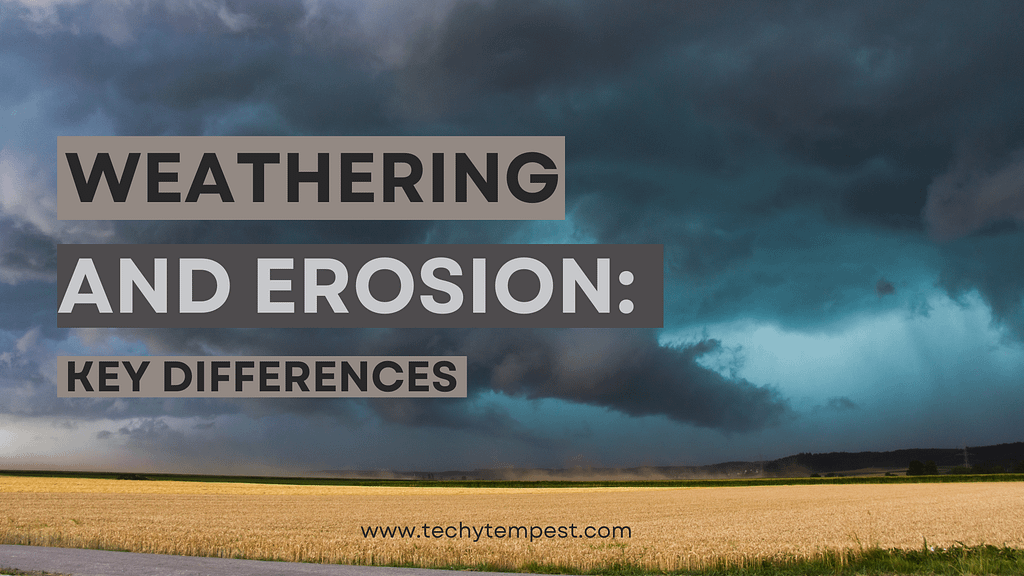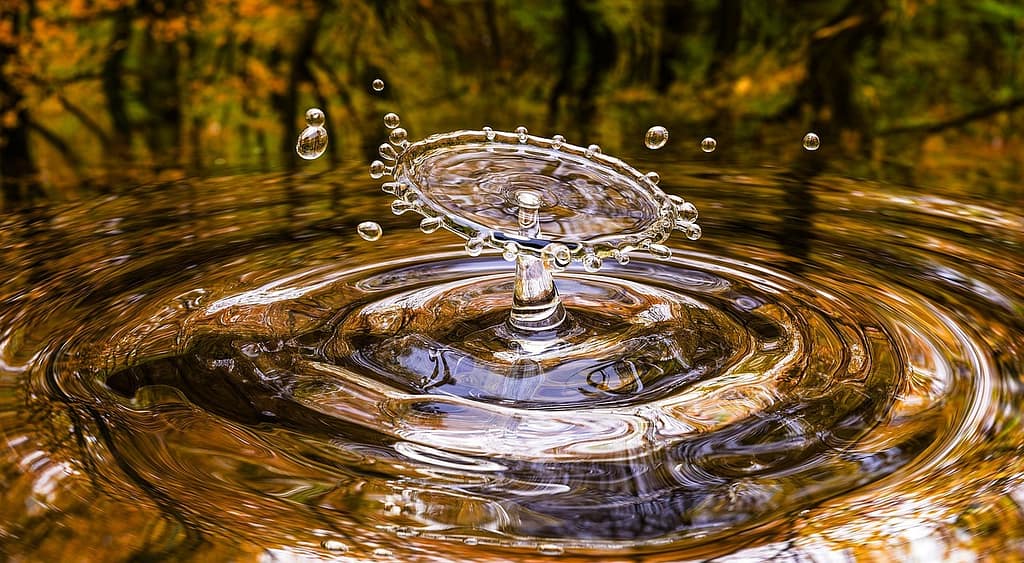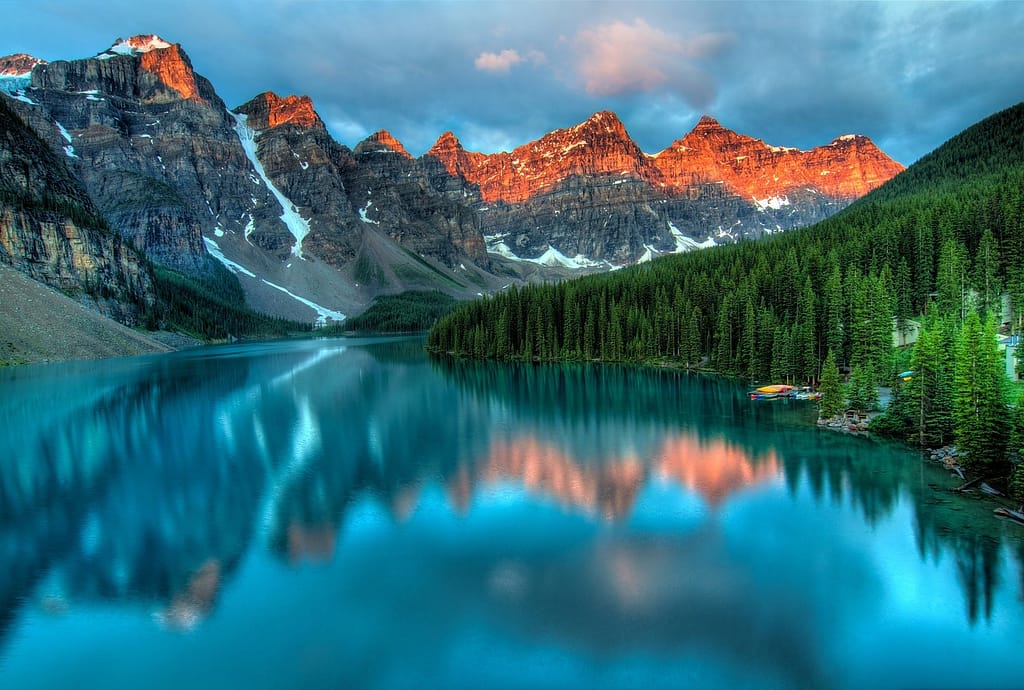When it comes to the dynamic processes that shape our planet, weathering and erosion play key roles. These natural forces are responsible for transforming rugged mountains into smooth hills and creating the stunning landscapes we admire. Although they are often mentioned together, weathering and erosion are different processes with unique characteristics and effects. This article discusses the main differences between weathering and erosion in depth, explaining their mechanisms, effects, and real-world examples. By the end, you will have a clear understanding of how these forces work together and shape our world.
Key Takeaways
- Quick Summary of Differences: Weathering breaks down rocks, while erosion transports the particles.
- Types of Weathering: Mechanical, chemical, and biological processes.
- Types of Erosion: Water, wind, ice, and gravity.
- Real-world Examples: How these processes shape landscapes.
- Environmental Impact: The role of weathering and erosion in ecosystems.
- Human Influence: How human activities accelerate or mitigate these processes.
When it comes to the dynamic processes that shape our planet, weathering and erosion play key roles. These natural forces are responsible for transforming rugged mountains into smooth hills and creating the stunning landscapes we admire. Although they are often mentioned together, weathering and erosion are different processes with unique characteristics and effects. This article discusses the main differences between weathering and erosion in depth, explaining their mechanisms, effects, and real-world examples. By the end, you will have a clear understanding of how these forces work together and shape our world.
1. Understanding Weathering
Definition and Overview
Weathering is the process by which rocks and minerals break down into smaller pieces through physical, chemical, and biological means. It occurs in place, without the movement of material, and is an important part of the geological cycle.
Explanation of Weathering
Weathering involves the disintegration and decomposition of rocks at or near the Earth’s surface. This process can break down a huge boulder into smaller particles over time, contributing to soil formation and the cycling of nutrients within the ecosystem.
Importance in the Geological Cycle
Weathering plays an important role in the geological cycle. It initiates the breakdown of rocks, making minerals available for soil development. This process is essential for plant growth, which affects ecosystems and the environment at large.
Types of Weathering
Mechanical weathering: This type involves the physical breakdown of rocks without changing their chemical composition. Common mechanisms include frost wedging, where water seeps into cracks, freezes and expands, causing the rock to break apart. Thermal expansion due to temperature fluctuations also causes rocks to crack and fragment.
Chemical weathering: Chemical reactions alter the minerals within rocks, causing them to decompose. Examples include oxidation, where oxygen reacts with minerals such as iron to form rust, and hydrolysis, where water combines with minerals to form new compounds.
Biological weathering: Living organisms contribute to the breakdown of rocks. Plant roots can grow into cracks, exerting pressure and splitting the rock. Lichens and mosses produce acids that chemically weather rocks, further aiding their breakdown.

Factors Influencing Weathering
- Climate: Temperature and precipitation levels significantly affect weathering rates. Warm, humid climates accelerate chemical weathering, while cold climates promote mechanical weathering through freeze-thaw cycles.
- Type of rock: Different rocks weather at different rates. For example, granite is more resistant to weathering than limestone, which is more susceptible to chemical weathering.
- Time: The length of time a rock is exposed to weathering agents determines the extent to which a rock breaks down. Longer periods of exposure lead to more significant weathering.
2. Understanding Erosion
Definition and Overview
Erosion is the process by which weathered rock and soil particles are transported from one place to another by natural forces such as water, wind, ice, and gravity.
Explanation of Erosion
Erosion involves the movement of particles broken down by weathering. This transport can occur over short distances, such as a few meters, or over vast areas, such as entire river systems.
Importance in the Geological Cycle
Erosion is important for reshaping landscapes and redistributing sediments. It plays a key role in the formation of valleys, deltas, and other landforms. Erosion also helps in nutrient cycling by moving fertile soil to different areas.
Agents of Erosion
Water erosion: Rivers, rainfall, and sea waves are powerful agents of erosion. Flowing water can cut valleys and carry sediment to different locations, creating riverbanks and deltas.
- Wind erosion: In arid regions, wind can pick up and carry fine particles long distances, creating dunes and reshaping desert landscapes.
- Ice erosion: Glaciers move slowly but are incredibly powerful. They can create deep valleys and fjords as they advance and retreat.
- Gravity erosion: Gravity causes landslides and rock falls, moving large amounts of material rapidly downhill.
3. Weathering vs. Erosion: Key Differences
Process Comparison
While weathering is the breaking down of rocks into smaller pieces, erosion involves moving these particles to new locations. Weathering occurs in situ (in place), while erosion involves movement.
End Products
Weathering produces soil, sediment, and dissolved minerals. Erosion moves these materials, depositing them in new locations such as riverbanks, sea floors, and deltas.
Speed and Impact
Weathering is usually a gradual process resulting in local changes. In contrast, erosion can be more dynamic, causing significant changes to the landscape in a short period of time.

4. Real-World Examples
Famous Landscapes Shaped by Weathering
- Grand Canyon: Chemical weathering of limestone and other sedimentary rocks over millions of years has contributed to the formation of this natural wonder.
- Monument Valley: Mechanical weathering of sandstone has created the iconic buttes and mesas that define this landscape.
Famous Landscapes Shaped by Erosion
- Colorado River: The erosive force of the river has carved layers of rock to create the Grand Canyon.
- Coastal Erosion: Waves and tides continually shape shorelines, creating cliffs, beaches, and other coastal features.
5. Environmental Impact
Ecosystem Influence
Weathering contributes to soil formation, which provides the basis for plant growth. Erosion can both create and destroy habitats, affecting the distribution of plant and animal species.
Positive and Negative Effects
- Nutrient cycling: Weathering releases essential minerals into the soil, which supports plant growth and ecosystem health.
- Soil erosion and desertification: Excessive erosion can destroy fertile topsoil, leading to land degradation and desertification, which threaten agriculture and natural habitats.
6. Human Influence on Weathering and Erosion
Accelerating Factors
- Deforestation: Removing trees destabilizes soil, making it more vulnerable to erosion.
- Urbanization: Construction activities disturb the land, increasing erosion rates.
- Agriculture: Farming practices can either enhance soil stability or contribute to erosion, depending on the methods used.
Mitigation Efforts
- Erosion control techniques: Methods such as terracing, contour plowing, and planting vegetation help reduce erosion.
- Sustainable land use practices: Adopting practices that minimize land disturbance and maintain vegetation cover can reduce erosion.
7. Conclusion
Recap of Key Differences
Abrasion is the breaking down of rocks into smaller pieces, while abrasion involves the movement of these particles to new locations. Weathering occurs in situ (in place), while abrasion involves movement.
Importance of Understanding These Processes
Weathering produces soil, sediment, and dissolved minerals. Erosion moves these materials, depositing them in new locations such as riverbanks, ocean floors, and deltas. Weathering is typically a gradual process that results in local changes.
Final Thoughts on the Role of Weathering and Erosion in Shaping Our World
In contrast, erosion can be more dynamic, causing significant changes to the landscape over a short period of time. Weathering breaks down rocks, while erosion moves particles. Both processes are integral to shaping our planet’s surface. Recognizing the difference between weathering and erosion helps us appreciate the dynamic forces operating in our environment and informs our efforts to manage land use sustainably. Weathering and erosion are powerful natural processes that constantly mold and reshape the Earth’s surface. Understanding these forces increases our ability to protect and preserve the landscapes we cherish. As we meet the challenges of environmental conservation, appreciating the nuances of weathering and erosion will lead us to more informed and sustainable practices.





